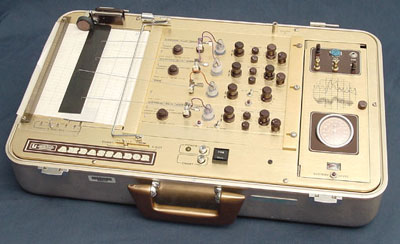

Polygraph
The term "polygraph" literally means "many writings." The name refers to the manner in which selected physiological activities are simultaneously recorded. Polygraph examiners my use conventional instruments, sometimes referred to analog instruments, or computerized instruments. It is important to understand what a polygraph examination entails. A polygraph will collect physiological data from at least three systems in the body.
A polygraph measures and records several physiological indices such as blood pressure, pulse, respiration, and skin conductivity while the subject is asked and answers a series of questions. The belief is that deceptive answers will produce physiological responses that can be differentiated from those associated with non-deceptive answers.
The polygraph was invented in 1921 by John Augustus Larson, a medical student at the University of California at Berkeley and a police officer of the Berkeley Police Department in Berkeley, California. According to Encyclopedia Britannica, the polygraph was on its 2003 list of greatest inventions, described by the company as inventions that "have had profound effects on human life for better or worse."
A typical polygraph test is conducted in the following format:
- a pre-test interview to gain some preliminary information which will later be used for "control questions", or CQ.
- an explanation about how the polygraph is supposed to work, emphasizing that it can detect lies and that it is important to answer truthfully.
- a "stimulation test" is conducted where the subject is asked to deliberately lie and then the tester reports that he was able to detect this lie.
- the actual test
- a post-test interview.
Polygraph admissibility varies from jurisdiction to jurisdiction. Some states ban it completely; others allow results by stipulation; and some allow polygraph evidence over objection.